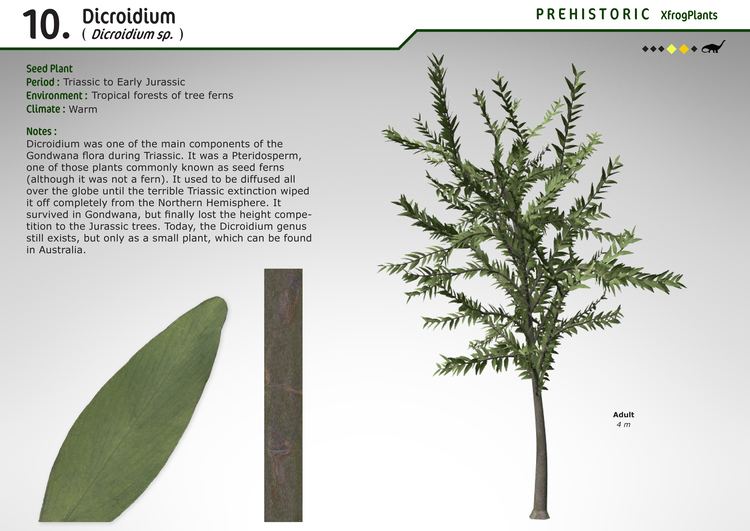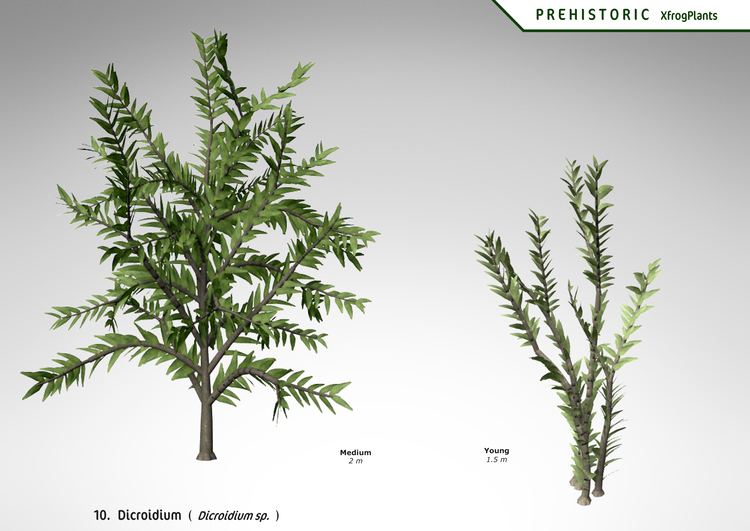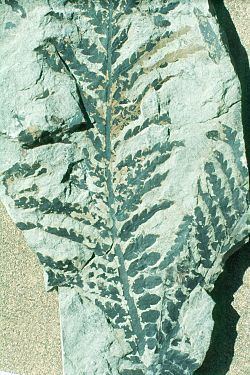Rank Genus | ||
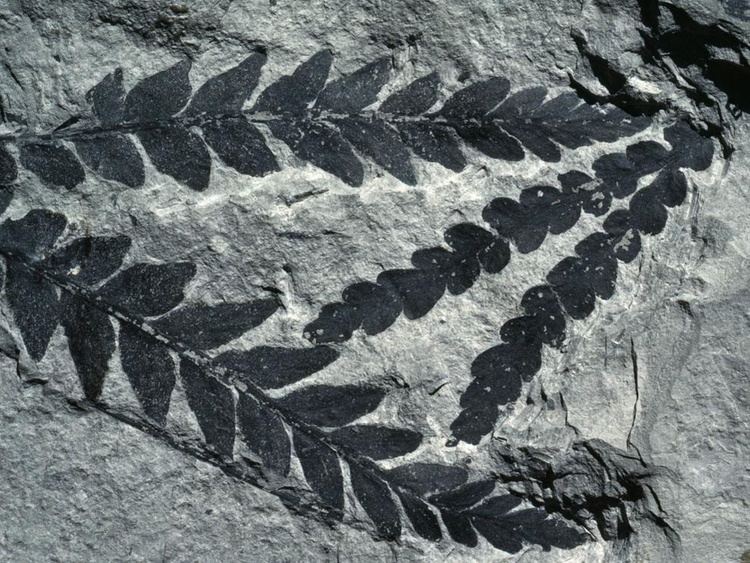 | ||
Similar Glossopteris, Umkomasia, Corystospermales, Pteridospermatophyta, Neocalamites | ||
Dicroidium is an extinct genus of fork-leaved seed ferns that were distributed over Gondwana during the Triassic (252 to 201 million years ago). Their fossils are known from South Africa, Australia, New Zealand, South America and Antarctica. They were first discovered in Triassic sediments of Tasmania by Morris in 1845.
Contents
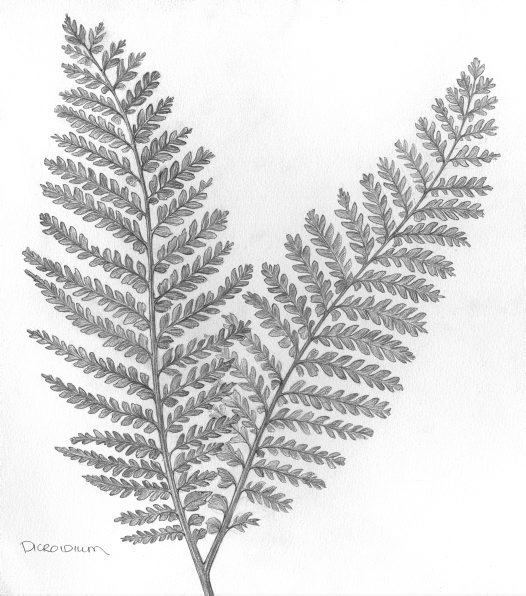
Description
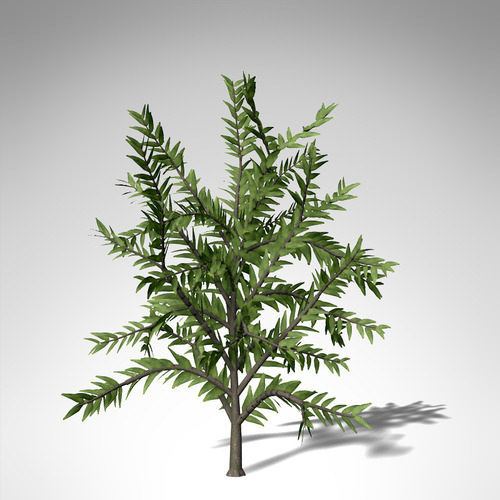
The leaves are similar to those of modern ferns but like all seed ferns (Pteridospermophyta) were thick and had substantial cuticles. Dicroidium differs from other seed fern leaves in having a forked rachis; giving the appearance of two fern leaves joined at the base. These plants had male and female reproductive structures. Following the form generic nomenclature of paleobotany, male pollen-bearing structures are separately named Pteruchus and the female structures Umkomasia.
Whole plant reconstructions
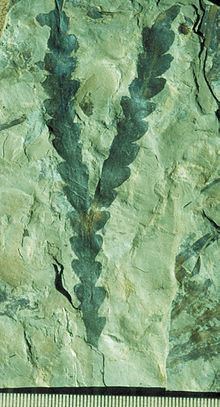
Different organs attributed to the same original plant can be reconstructed from co-occurrence at the same locality and from similarities in the stomatal apparatus and other anatomical peculiarities of fossilized cuticles.
